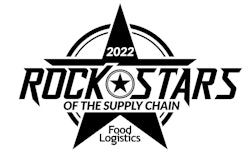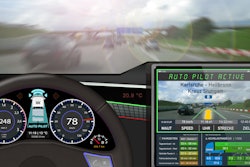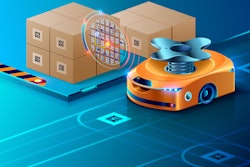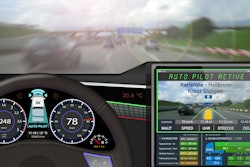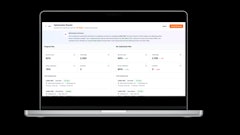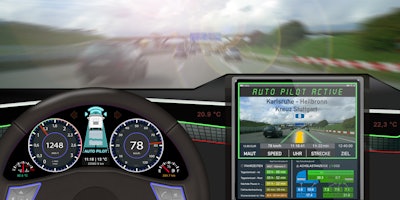
We have been hearing more about supply chain shortages ever since the pandemic began in March 2020. Today, the challenges brought on by the pandemic are real and have been further exacerbated by businesses reopening and people getting back to pre-COVID-19 engagement. However, the current labor shortage challenges the supply chain at unprecedented levels, causing a lack of goods as the nation heads into the holiday season.
To fix the congestion plaguing two California ports, President Biden announced that Port of Los Angeles and Port of Long Beach will operate on a 24/7 schedule, enabling them to add about 60 more working hours. The concern then becomes, will there be enough labor to work those extra hours, and will there be enough trucks to move cargo containers out of the ports?
While the shift to a 24/7 work cycle puts U.S. ports on par with others worldwide, it is only seen as a temporary fix, as there are other hurdles to overcome at every stop along the supply chain. Reducing the need for a paper trail creates a more robust workflow in warehouses and during loading and unloading. Creating a more efficient and quicker process of getting trucks in and out of facilities in less time is where improved operations could give workers more time back in their days, which can help solve inefficiencies.
Eliminating the paper trail
Paper and pen have long been used to track everything from invoicing to transfer of cargo documentation. However, paper has proven an ineffective way to manage these transactions due to the errors that can be introduced and the more labor-intensive back-office work that stems from passing physical documents along through the supply chain. That doesn’t even take into consideration how much longer it takes to fill out paperwork.
Let’s look at the process of truck drivers filling out the bill of lading (BOL) documentation. When arriving at a facility, drivers need to check in with the security guard and clerk and fill out paperwork to get their load assignments. They then proceed to the facility to pick up their trailer, where they may need to sign off from a dock or yard manager to validate the pickup. And before leaving the facility, they have to fill out more paperwork with the clerk to ensure that everything is good to go. That’s a lot of touchpoints that consume valuable driver time.
Digitizing that entire process could create a blockchain-like record of the truth, as that BOL can easily be shared and accessed both up and downstream from its origination. If there were to be an error somewhere along the line, everyone who touched that BOL can see what went wrong and where it happened. Perhaps more importantly, it could save valuable time for drivers, as most of the “paperwork” could be automated or completed by taking pictures with a smartphone. This process takes a couple of seconds rather than minutes with manually writing everything with paper and pen.
Streamline the loading and unloading of trucks
Loading and unloading cargo is a difficult and time-consuming process that, if not performed with care, can cause injuries to workers or shipping errors. Docks and distribution centers can get congested and many things can go wrong. But, many advanced technologies on the market ensure optimal safety, productivity and efficiency at a warehouse like a warehouse management system (WMS).
A WMS can connect all tech solutions throughout the center, including everything from planning software to dock management systems and master control panels. These systems collect, track and analyze data, giving employees valuable information about loading/unloading in real-time.
The tech has to work together through a management system to see the most significant efficacy. When it’s all working together, it can tell the journey of each package from Point A to Point B. And, on the flip side, planning solutions can tell you how to load pallets best, maximizing capacity and ensuring safety. Dock management systems are helpful in identifying inefficiencies and streamline processes using cameras, sensors, and lights. Additionally, infrared sensors can detect the arrival and departure of trucks and activate the trailer restraint and dock levelers. Centralizing these systems establishes supply chain efficiencies from start to finish, including the unloading and loading process.
Get trucks in and out of facilities quicker
Time is an essential commodity in the supply chain and completing tasks in the least amount of time is extremely important. However, one of the biggest holdups over the years has consistently been dwell and detention times for truck drivers. Revisiting the earlier example, truck drivers can spend hours at one facility filling out paperwork and waiting for their trailer to be unloaded and reloaded. And, when they only have 11 hours out of the day that they’re available to drive, those hours spent waiting at facilities is costly and adds up.
Research conducted by the MIT Freight Lab demonstrates that truck drivers spend an average of 6.5 hours a day driving out of the 11 available hours permitted by law. Imagine if the paperwork was digitized and checking in and out of facilities didn’t require drivers to park and interact with clerks or security guards. Technology that streamlines that process has cut trucking wait times down from 66 minutes to 23 minutes on average, giving drivers more time back in their days to drive. That valuable time saved is a small piece of the puzzle for overcoming delays in the supply chain.
While these are just a few examples of how technology can create more efficiencies within the supply chain, there are many other examples of how tech can replace manual, outdated, ad-hoc processes that only develop hurdles for companies to overcome. Relying on traditional software solutions to correct today’s supply chain issues is not the right approach. Most of the software in use today is outdated and only interacts one level upstream and downstream with partners. This approach is a mere band-aid to the more significant problem and is not the best approach with the expectation of supply chain disruption lasting well into 2022. Instead, it will take every business across the different supply chain sectors pushing in the same direction and creating efficiencies to overcome the current bottlenecks





